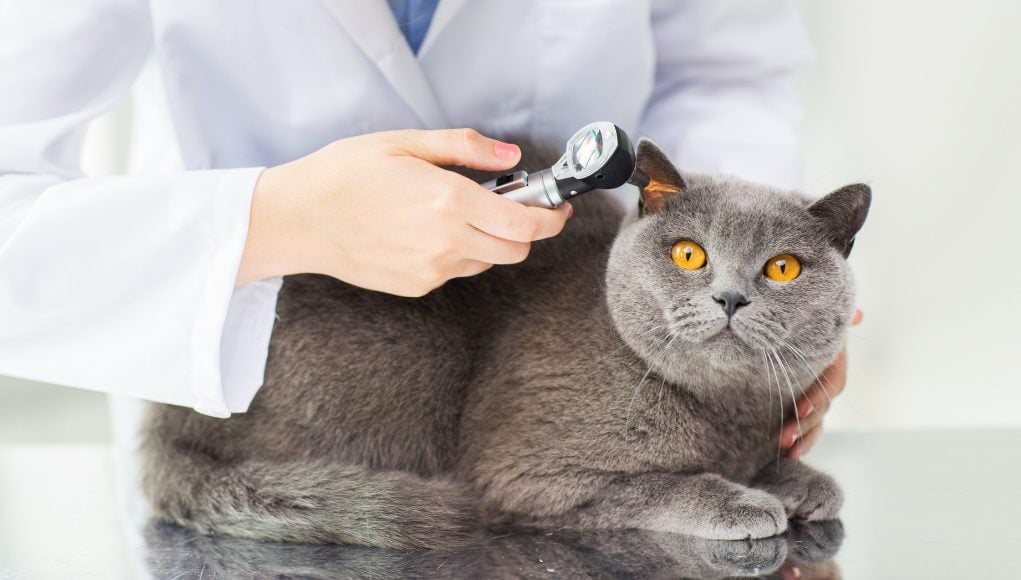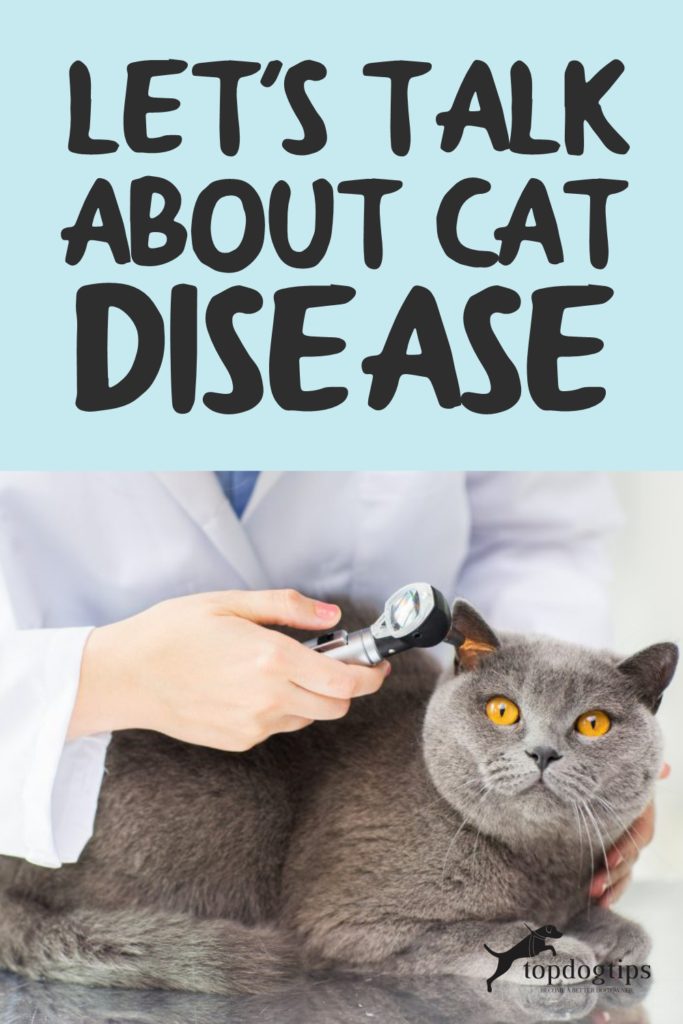As fur parents, it's inevitable to worry about random things related to our cats, especially when they're susceptible to any cat disease.
Sometimes, you worry about what they should eat or drink; most of the time, you worry about their health.
Hence, we need to recognize the signs and symptoms of some cat diseases immediately; otherwise, it'll be hard to know what to do whenever our pets get sick.
Below, we have gathered the top eight cat diseases your cat must look out for. Read further to find out more.

Cat Disease #8: Hyperthyroidism
Hyperthyroidism, also known as hyperthyroid disease, mainly occurs in cats around and exceeding ten years old. In general, it is an endocrine cat disease caused by an enlarged thyroid due to a noncancerous tumor.
Bear in mind that although this tumor can be cancerous, its occurrence is listed only at 5%.
Cats with hyperthyroidism, in general, produce too many hormones in their thyroid.
As a result, it weakens their body, causing significant weight loss; however, it can also mask other underlying diseases due to possible hormonal imbalance.
Aside from the lump in their throat, cats afflicted with hyperthyroidism can also have oily and shabby coats. However, they may also experience:
- frequent vomiting;
- constantly in pain;
- restlessness and irritability;
- rapid and irregular heart rates;
- polydipsia or extreme thirstiness;
- sudden increase of appetite with a dropping weight; and
- several digestive problems, such as diarrhea and polyuria
How To Diagnose Hyperthyroidism
On the other hand, veterinarians use three main tests to diagnose a cat with hyperthyroidism.
- A veterinarian will check your cat’s vital signs, particularly the area by their neck, through a physical test . They may also perform tests based on their heart’s rhythm and rate.
- Veterinarians may also take blood samples from your cat to determine their hormone levels. Usually, they’d search for signs of thyroxine or T4.
Hyperthyroidism also mimics the symptoms and results of other diseases, so a thorough examination is analyzed.
- Chest Examinations and X-Rays are some of the other tests they use to determine if a cat suffers from hyperthyroidism.
Cats with hyperthyroidism essentially require doses of iodine for the stabilization of their hormonal levels.
To get this, you may admit them to either one or several treatments such as medical therapy, surgery, or radioactive iodine treatment.
Medical therapy primarily helps in balancing hormones. It costs differently depending on the drug your cat is using.
The most prescribed drug for this approach is methimazole. Although inexpensive, this drug does not do anything to shrink the thyroid size.
Furthermore, it requires lifelong treatment and frequent veterinary monitoring.
Surgery is also effective in treating hyperthyroidism by removing the causing tumor itself.
However, your cat may have to take methimazole orally for 15 days to help the vet identify any underlying kidney disease.
Radioactive iodine treatment is a go-to for pet owners who have them in their vicinity.
The injected iodine finds and kills ectopic tissue without harming other healthy thyroid issues.
As of now, there are no known ways to prevent hyperthyroidism. Fortunately, however, early detection and diagnosis help in treating them to avoid further complications.
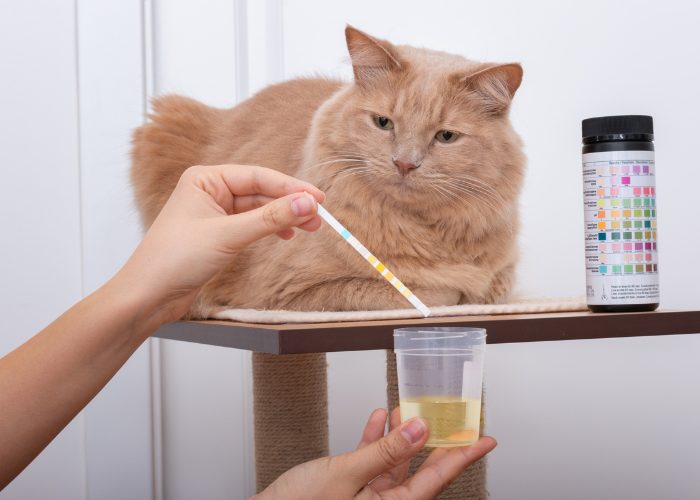
Cat Disease #7: Chronic Kidney Disease
In cats, chronic kidney disease primarily encompasses the degenerative changes in their kidneys, resulting in its deterring function.
Although this illness mostly strikes in senior cats, cats in any age group might suffer from death without proper care or treatment.
Symptoms of chronic kidney disease include:
- lethargy and nausea;
- dysuria (painful urination) while having polyuria (excessive urination)
- loss of appetite and diarrhea, leading to immediate weight loss
If left untreated, this disease will leave your cat with long term symptoms such as:
- dehydration;
- gastric ulcers;
- bloody urine;
- high blood pressure;
- frequent seizures,
- anemia; and
- heat intolerance
How To Diagnose Chronic Kidney Disease
There are four commonly referred tests to determine how severe your cat's kidney condition is.
- Complete Blood Count (CBC) Analysis primarily counts the red and white blood cells of your cat. However, it may also attempt to look for any types of blood-related illnesses like anemia and other conditions.
- Blood Electrolytes measure the electrolytes in the blood produced by the kidney. Through this test, you’ll know if your cat’s well-hydrated and healthy.
- Urinalysis evaluates the wastes carried through by the urine, which is the by-product of blood filtration.
- And last but not least, the blood chemistry panel determines the measurements of the components in the blood, including organ functionality. The evaluation of blood urea nitrogen (BUN) and creatinine are the kidney values within this test.
On the other hand, there are several possibilities one can use to treat their cat's chronic kidney disease:
- If you decide to undergo a kidney transplant, your cat will have to go to surgery to replace their kidney with a healthy one.
- Although expensive, dialysis is yet another effective way to treat your cat because it filters out their blood from any wastes.
- Therapeutic diets are also an excellent recommendation. In this method, certain nutrients in your cat's diet will be managed and adjusted according to your cat's necessities.
- Fluid therapy is another good option for chronic kidney disease treatments. It provides necessary hydration and flood filtration for your cat’s kidneys.
Lastly, the vet will place your cat under medication, vitamins, and supplements. This process cleanses acid and lessens the absorption of phosphorus your cat's kidney gets.
Since the kidney filters the blood, it's possible to prevent chronic kidney disease through proper hydration.
As long as you avoid anything that contains high levels of sodium, your cat's kidneys will be safe.
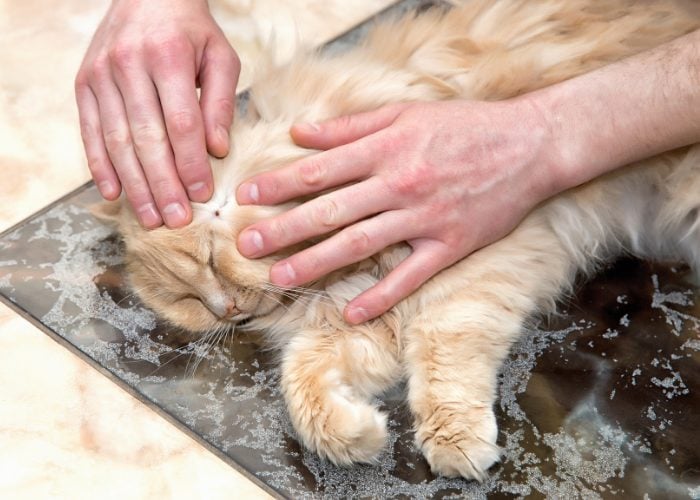
Cat Disease #6: Lyme Disease
Cats may get Lyme disease from ticks because ticks are a carrier of the bacteria called Borrelia burgdorferi. Lyme disease is a condition that affects most of your cat’s nervous system.
If not treated as soon as possible, Lyme disease may be fatal to your cat because it often attacks multiple systems, including the nervous, urinary, and circulatory systems.
Even dogs are susceptible to this disease.
However, bear in mind that cats barely show any Lyme disease symptoms. But if they do, they must exhibit the following:
- lethargy,
- fever and fatigue,
- failure to regulate their temperature,
- loss of appetite; and
- difficulty in breathing.
How To Diagnose Lyme Disease
To diagnose Lyme disease, your veterinarian will first refer to your cat’s history to determine if they had ticks in the past or not.
Your veterinarian may also ask about what potentially may have triggered your cat’s illness.
They also use an Enzyme-linked immunosorbent assay (ELISA) test, which detects antibodies, giving false-positive results.
If the outcome is positive, they use the Western blot test to confirm if it’s true.
Prescribed antibiotics are the way to go when it comes to treating your cat of Lyme disease. Recovery may be extended and deadly if you don’t treat your cat as early as possible.
Thus, to prevent this from happening, keep in mind to regularly brush your cat and check for any ticks covered on their skin.
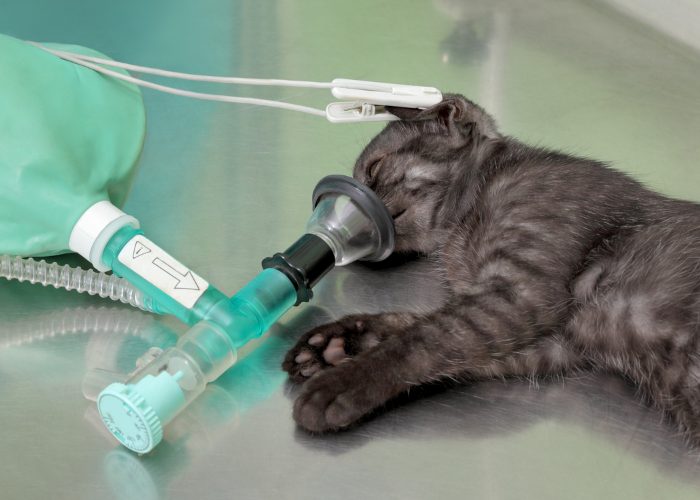
Cat Disease #5 Hyperlipidemia
Hyperlipidemia is a term used to generalize conditions where abnormal fat deposits are in your cat’s bloodstream. The word itself translates to “excess fat.”
This disease is caused by the rising number of lipids, triglycerides, and cholesterol, within the bloodstream.
Although fats typically increase after every meal, it’s abnormal if they don’t decrease in time.
Hyperlipidemia may also be due to obesity, medications, pancreatitis, or diabetes mellitus, and it usually affects the Himalayan breed.
In addition, cats with Hyperlipidemia collate with other conditions; thus, it’s hard to identify which causes what.
However, we have listed below the main potential symptoms of Hyperlipidemia:
- abdominal discomfort;
- vomiting;
- loss of appetite;
- significant weight changes;
- diarrhea;
- lethargy;
- sudden changes in behavior;
- seizures
- polydipsia and polyuria;
- skin lesions; and even
- eye abnormalities.
How To Diagnose Hyperlipidemia
In general, there are two types of Hyperlipidemia, classified as either primary and secondary.
The difference is that primary is genetically acquired, and secondary is acquired later in life.
Vets may use laboratory samples of the cat’s blood to determine the lipid levels of their blood.
If the quantity is higher than average but with no underlying causes, they may have primary Hyperlipidemia.
Besides, if they have a heart condition or any other illnesses that can influence their blood, they have secondary Hyperlipidemia.
To treat Hyperlipidemia, the vet will prescribe and issue a medicine based on how severe your cat’s condition is.
Furthermore, their diet also undergoes modifications based on what nutrients your cat needs and what they need to avoid.
Avoiding Hyperlipidemia depends on what type your cat has.
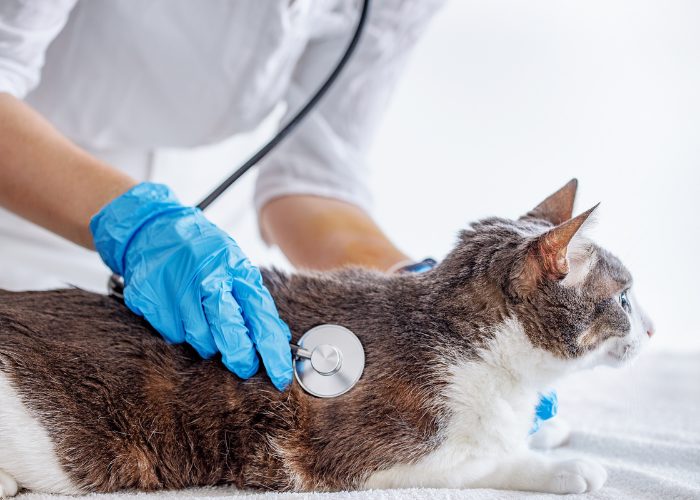
Cat Disease #4: Hypertrophic Cardiomyopathy
Hypertrophic Cardiomyopathy, known as HCM, is a condition where the walls of your cat's heart thicken, especially around the ventricles.
As a result, it lessens the heart's efficiency in pumping blood throughout their bodies.
It is the most commonly diagnosed cardiac condition within the general population of cats. It usually affects large cats such as the Persian and the Ragdoll.
A clear indication of HCM is when their heart experiences irregularity in pumping, where we can hear their so-called “heart murmurs.”
Other symptoms might also occur, such as:
- labored and open-mouthed breathing;
- pale or blue gums;
- partial paralysis;
- lethargy; and
- frequently fainting
How To Diagnose Hypertrophic Cardiomyopathy
If there's a suspicion that your cat has Hypertrophic Cardiomyopathy, they may have to undergo a series of tests.
Some of these tests are X-Rays, chest scans, echocardiograms, and blood pressure testing.
Realistically speaking, HCM doesn't have a cure, nor would you expect it to disappear once treated.
But your cat's nutrition and medication must always be under your radar to ensure that your cats are in total health.
Thus to prevent developing Hypertrophic Cardiomyopathy, it's best to control your cat's diet and add healthy nutrients such as omega-3 fatty acids and taurine.
In addition, don't forget to provide the things that can be helpful to your cats as per the veterinarian's orders.
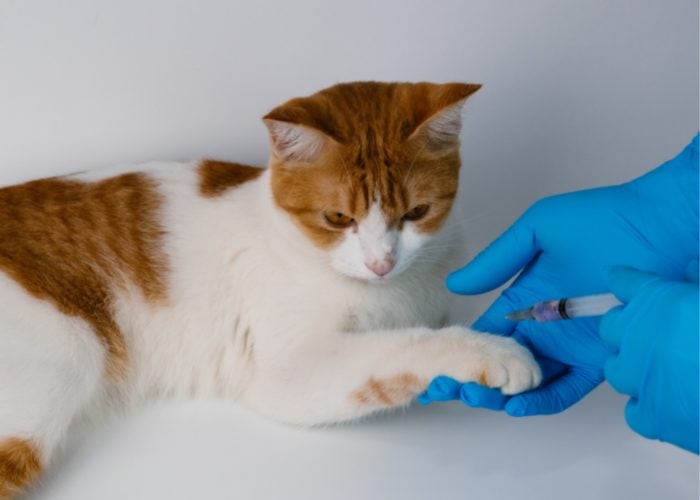
Cat Disease #3: Rabies
Rabies is a viral disease that can affect all types of warm-blooded creatures. And it's no surprise that the cat may be one of them.
Even if the illness is likely associated with dogs, myths revolve around cats' stronger reactions to rabies.
Rabies primarily affects a cat's nervous system through an infected wound or scratch that will be fatal for your cat if left unattended.
The frequent symptoms of rabies that show up are the following:
- sudden changes within their behavior;
- loss of muscle control and paralysis;
- drooling and frothing in their mouth;
- frequent aggression; and
- sensitivity to water and light combined ;
How To Diagnose Rabies
If your cat had a bite from a suspected rabid animal, you must go to the vet as soon as possible to get them treated.
Furthermore, don't hesitate to speak with the other animal's owner and talk to them about any rabies risk.
In addition, rabies in cats isn't directly apparent and may come through after an incubation period after exposure. There are no tests at all to indicate if a cat has rabies.
Nonetheless, if your cat shows symptoms, there is nothing that you or your vet can't do; since it rapidly affects their system.
Although there is no direct treatment for rabies in cats, annual rabies boosters effectively keep the virus out of your cat.
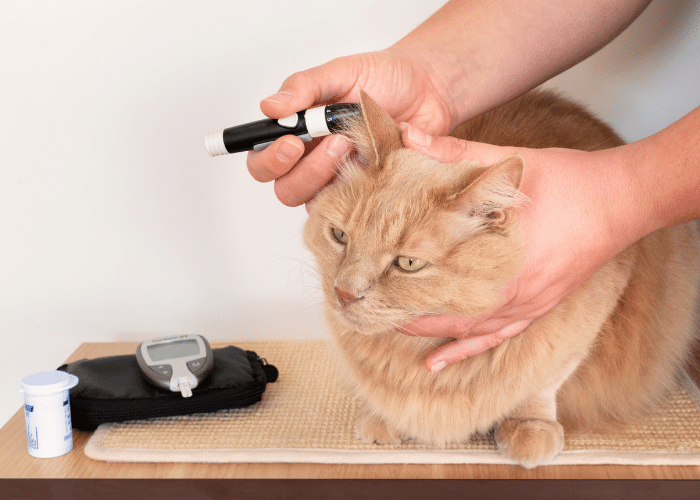
Cat Disease #2: Diabetes Mellitus
Diabetes Mellitus, or sugar diabetes, is an endocrine cat disease caused by the lack of insulin production in the body.
It is one of the highest at-risk illnesses your cat is likely to face, especially with an unbalanced diet.
There are three types of Diabetes Mellitus.
- Type I Diabetes Mellitus wholly depends on insulin for body functioning. However, they cannot produce the hormone and have to rely on external sources to stay functional.
This type of diabetes is also called “juvenile diabetes.” The cause of this type of diabetes is the destruction of beta cells in the pancreas.
- Type II Diabetes Mellitus does not depend on insulin because the body cannot efficiently use the said hormone. Characterized with high blood sugar content, it is resistant to insulin.
With this in mind, Type II does not produce insulin as much as type I.
- Type III Diabetes Mellitus includes the sudden influence of insulin from any condition or medication your cat will have.
Diabetes Mellitus shows several signs and symptoms in various degrees. Frequent symptoms of the condition in cats involve:
- polydipsia and polyuria;
- increased hunger and appetite;
- sudden weight drops; and
- muscle lethargy
How To Diagnose Diabetes Mellitus
The veterinarian will demonstrate samples within their blood and urine to determine if they have Diabetes.
Treatments for diabetes primarily include insulin shots to regulate their blood sugar levels. Thus, your cat must commit to it within its whole lifetime.
A balanced diet prescribed by the vet during checkups will also help your cat prevent insulin resistance, leading to diabetes.
Cat Disease #1: Lymphoma
Lymphomas are tumors that may live anywhere throughout your cat's body, whether in their digestive system, brain, or lungs.
These tumors are highly cancerous, and they account for 33% of the tumors diagnosed in cats.
Different classifications of Lymphoma are determined by where they're growing.
- Multicentric tumors grow anywhere within their bodies with lymph nodes (e.g., under the jaw).
- The mediastinal type grows tumors around the thymus gland.
- The alimentary type includes tumors within their gastrointestinal system.
- Renal type often happens within their kidneys—considered as the worst form of Lymphoma among felines.
- Solitary type happens in other parts of their bodies.
Symptoms of feline Lymphoma include:
- lethargy and the inability to move anywhere;
- breathing difficulties;
- constipation or diarrhea;
- swollen lymph node;
- loss of appetite;
- vomiting;
- polydipsia, and polyuria
How To Diagnose Feline Lymphoma
A way to effectively diagnose feline Lymphoma is a thorough medical examination which may include but is not limited to complete blood count, ultrasound, X-ray, urinalysis, and endoscopy.
The most popular way of treating feline Lymphoma is through chemotherapy, which effectively breaks down the cancer cells.
However, the treatment isn't to eradicate the tumors but to extend your cat's life further.
Furthermore, Lymphoma is inevitable, but obtaining it may lessen with a vaccine for feline leukemia virus infection.
Conclusion
Cats tend to hide anything that concerns their health, so you must carefully observe their body language.
When observing one of the symptoms above in your feline, please consult your veterinarian accordingly to determine what they’re suffering from.
Since cats don’t have a long lifespan, take care of them if you want them around as long as possible.
They can’t take care of themselves to nurse them back to health, so it’s up to us to help our feline friends.
READ NEXT: How Long Do Cats Live? – Feline Average Life Expectancy
Want To Share This…


